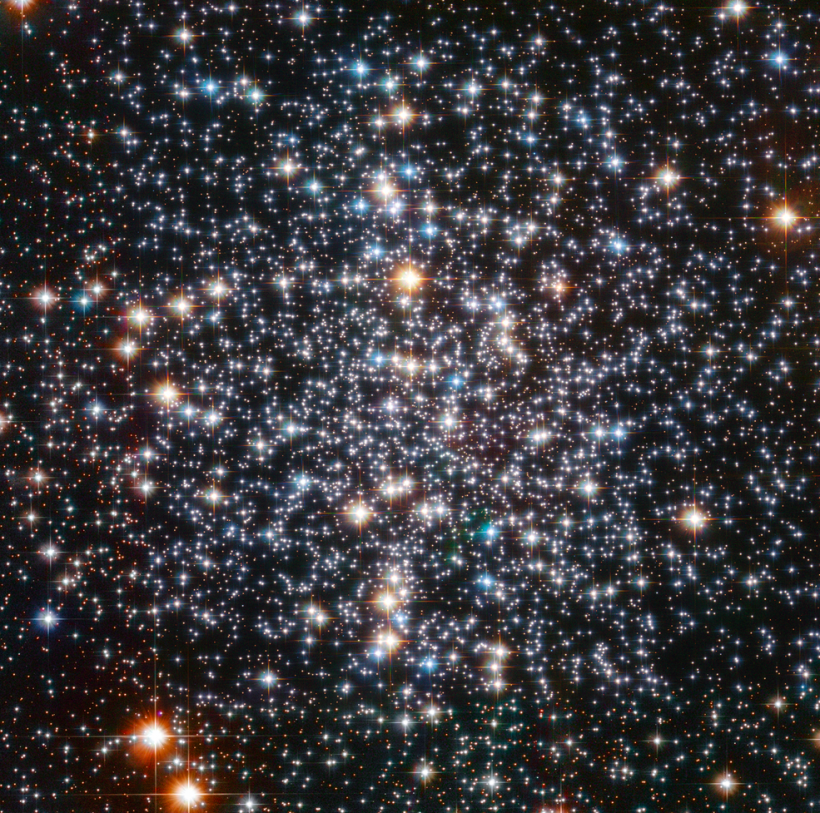NASA's Hubble Space Telescope has captured compelling evidence of a rare type of black hole, offering astronomers new insights into the elusive realm of "intermediate-sized" black holes.
Located in the heart of the nearest globular star cluster, approximately 6,000 light-years away from Earth, this extraordinary discovery adds to our understanding of these cosmic enigmas.

The Missing Link
Black holes come in two distinct sizes: small and supermassive. Small black holes, formed from the remnants of massive stars, are scattered throughout our galaxy, while supermassive black holes, millions or even billions of times the mass of our Sun, dominate the centers of galaxies.
However, the missing link has been the intermediate-sized black hole, weighing between 100 and 100,000 solar masses, and their formation, distribution, and rarity have puzzled scientists.
Astronomers have previously found potential intermediate-sized black holes using various observational techniques. Two notable candidates, 3XMM J215022.4-055108 and HLX-1, reside in dense star clusters on the outskirts of distant galaxies.
These immense objects, comparable to tens of thousands of suns in mass, might have previously resided at the centers of dwarf galaxies.
Furthermore, the exploration for intermediate black holes has been augmented by the Chandra X-ray observatory, which unveiled a notable assemblage of potential findings in 2018.
Within our own Milky Way galaxy, suspicions of intermediate-sized black holes in dense globular star clusters have emerged. However, conclusive evidence has remained elusive due to limited data and alternative theories.
Now, leveraging the exceptional capabilities of the Hubble Space Telescope, astronomers have embarked on an unprecedented search for black holes in the core of the globular star cluster Messier 4 (M4).
This endeavor has resulted in the detection of a potential intermediate-sized black hole, estimated to be around 800 times the mass of our Sun.
Although invisible to direct observation, the black hole's presence is inferred through the analysis of stellar motion within its gravitational field.
Read Also: NASA's Hubble Space Telescope Snaps a Massive, Light-bending Galaxy Cluster
12 Years of Observations
Analyzing 12 years' worth of observations, astronomers have meticulously tracked the precise movements of individual stars in M4, reinforcing their estimations of the black hole's mass.
Hubble's data dismisses alternative explanations like a dense cluster of unresolved stellar remnants or smaller black holes orbiting each other.
The compactness of the observed region challenges alternative theories, defying numerical simulations that attempt to replicate a concentration of black holes, neutron stars, and white dwarfs within such a small space. These simulations fail to replicate the highly condensed mass found in M4.
If the suspected object is not a solitary intermediate-sized black hole, it would require around 40 smaller black holes crammed into a one-tenth light-year diameter to explain the observed stellar motions.
This configuration would be dynamically unstable, resulting in mergers or ejections.
While the evidence points strongly towards the existence of an intermediate-sized black hole, Eduardo Vitral, the lead author of the study, remains cautious.
"While we cannot completely affirm that it is a central point of gravity, we can show that it is very small. It's too tiny for us to be able to explain other than it being a single black hole. Alternatively, there might be a stellar mechanism we simply don't know about, at least within current physics," Vitral said in a statement.
Related Article: NASA's Hubble Space Telescope Captures Bizarre Runaway Black Hole









